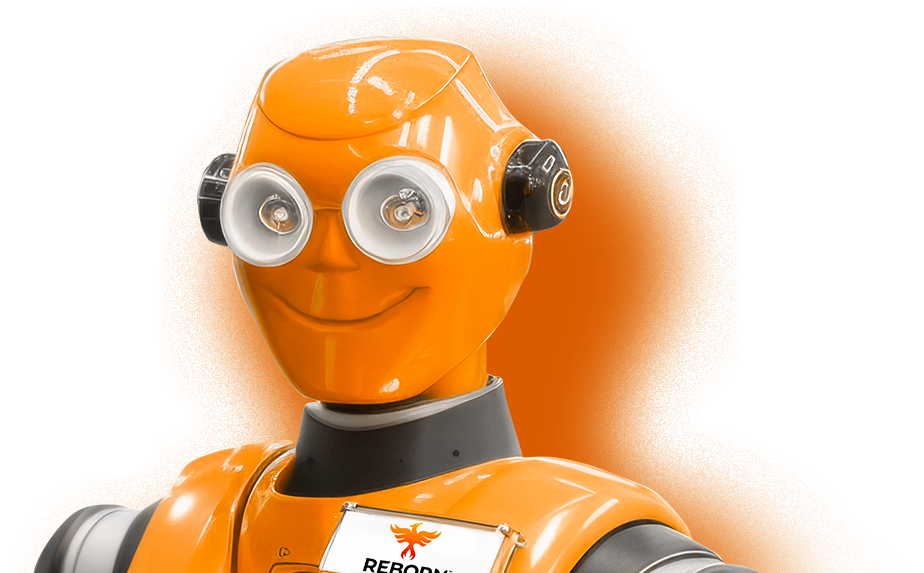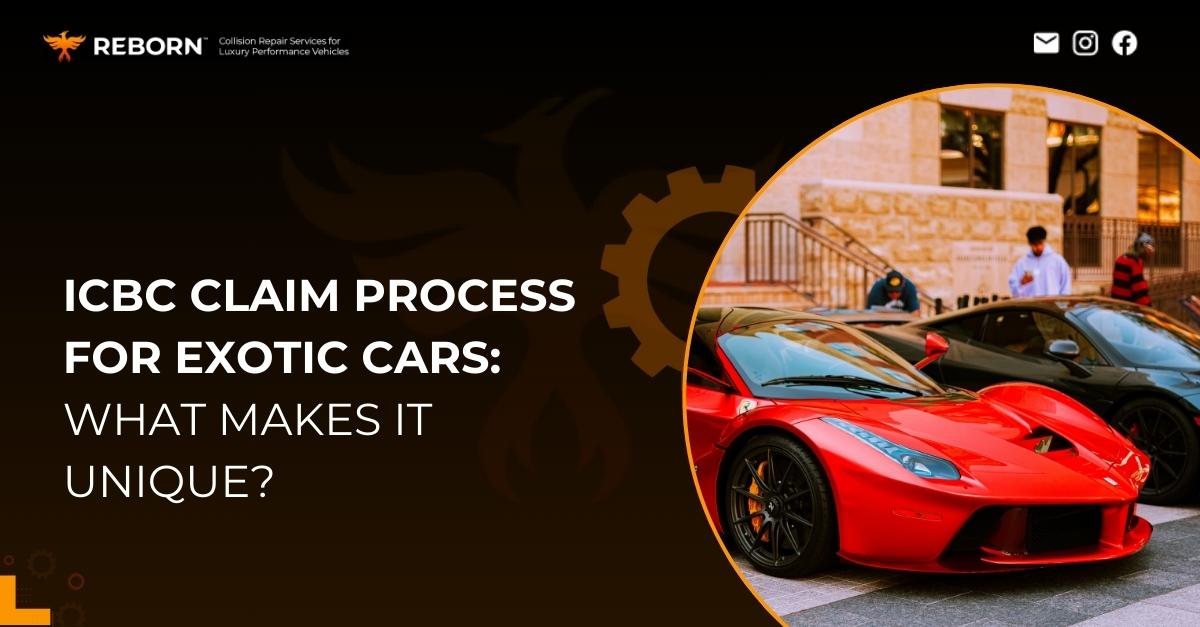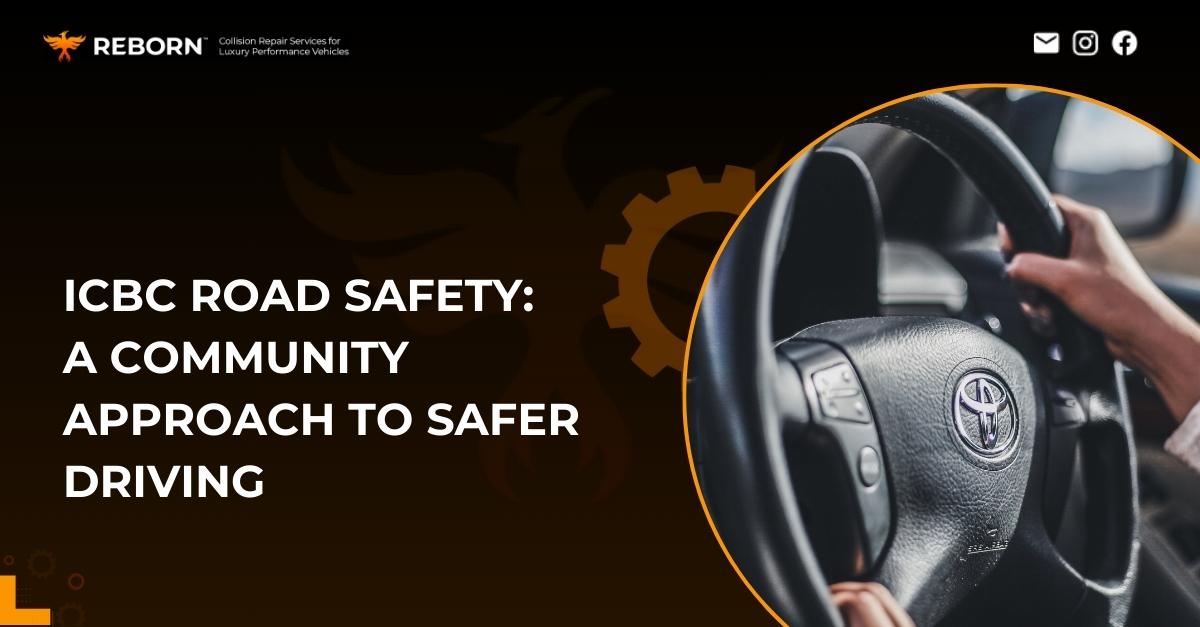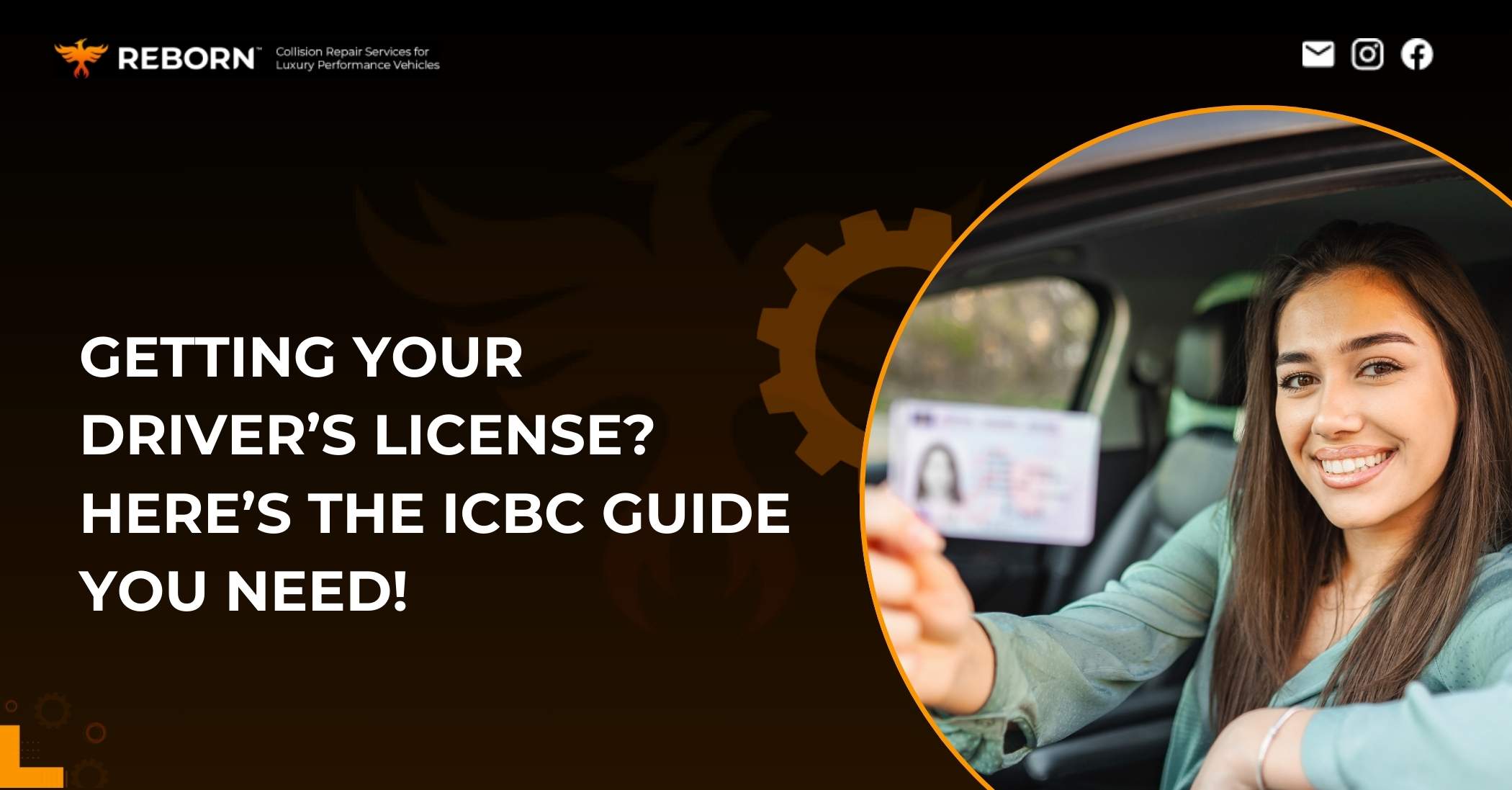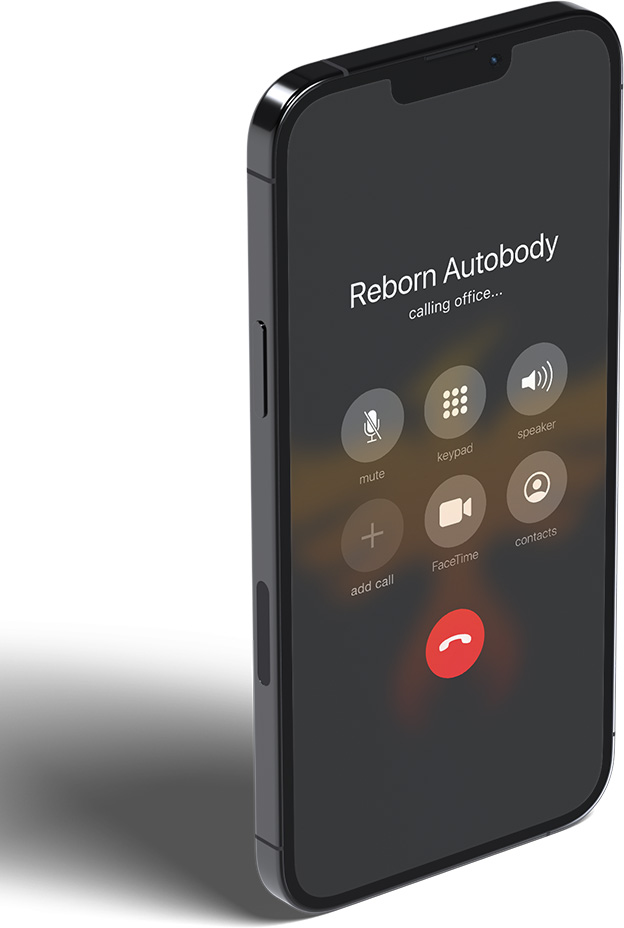Many people dream of owning a Tesla, and buying a used one can make that dream more affordable. Used Teslas offer lower prices, access to the Supercharger network, and regular software updates. However, key factors such as battery health and software compatibility require careful consideration.
This guide is designed to help you make an informed decision. Whether you’re eyeing the Model S, Model 3, Model X, or even the Model Y, you’ll find all the information you need right here.
We’ve also included a printable inspection checklist to ensure you don’t miss any critical steps. Ready to begin your Tesla journey? Let’s dive in!
Used Tesla Models Common Issues
Tesla is one of the most popular electric car brands, but even its vehicles require repairs and maintenance. Below are the main issues to consider for each used Tesla model:
Tesla Model S
Renowned for its luxury features, high performance, and impressive range, the Model S remains a sought-after option. However, used models often face:
- Battery Degradation: Reduced capacity over time can limit the vehicle’s range.
- High Repair Costs: Components like the drivetrain or air suspension are expensive to repair.
- Build Quality: High-mileage units may show signs of poor assembly or wear.
- Heat-Prone Door Handles: Streamlined door handles can become excessively hot in direct sunlight.
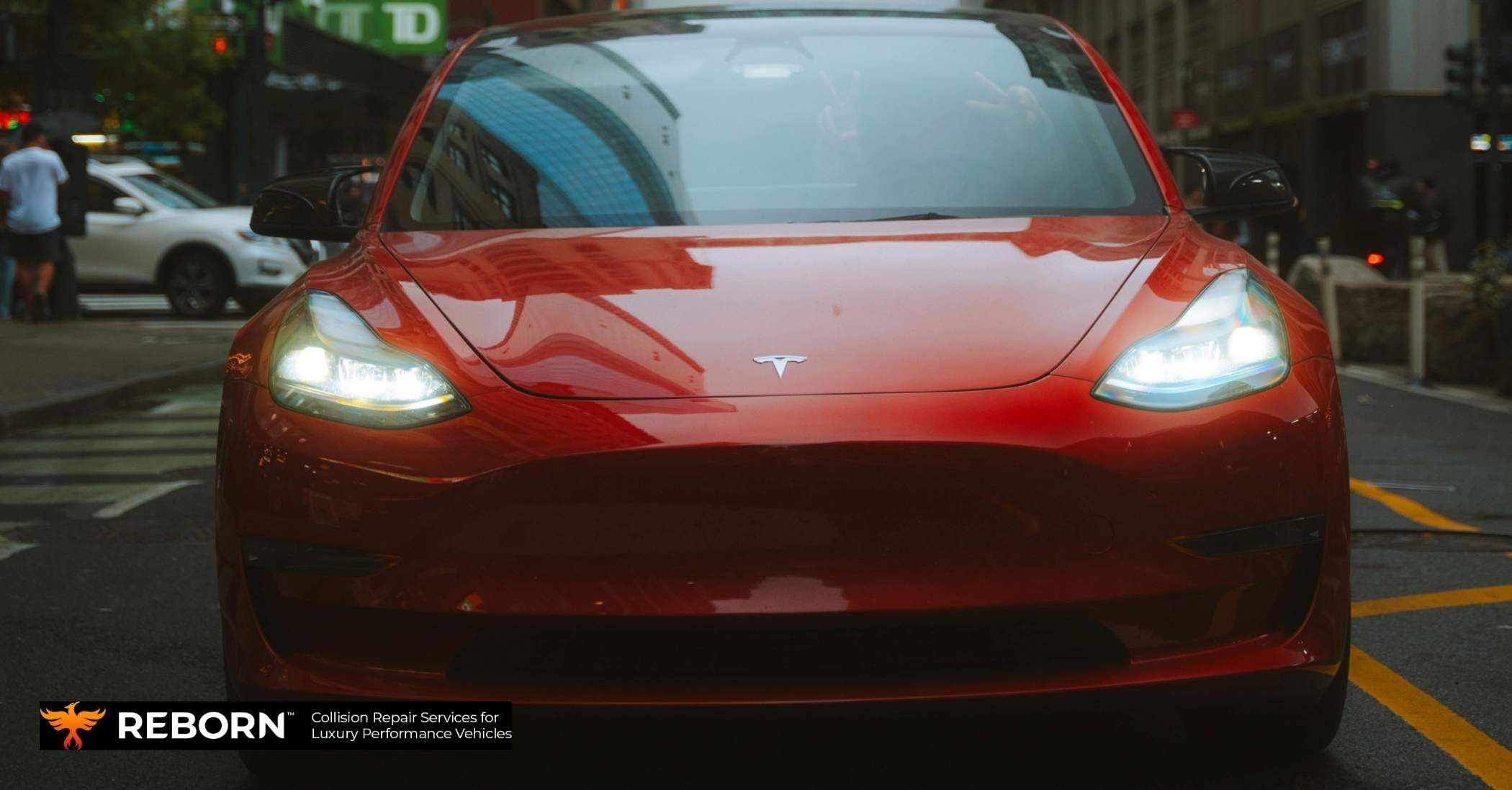
Tesla Model 3
As Tesla’s most popular and affordable model, the Model 3 dominates the used EV market. While it offers excellent value, watch out for:
- Accident History: Ensure any past repairs were performed by Tesla-certified mechanics.
- Software Compatibility: Older models may lack support for newer features without updates.
- Interior Wear: Seats and dashboards in high-mileage vehicles often show heavy use.
Tesla Model X
With its futuristic design and family-friendly features, the Model X offers unique appeal. Key issues to consider include:
- Falcon-Wing Doors: These iconic doors are prone to mechanical problems, which can be costly to fix.
- Air Suspension: Ensure proper functionality, as repairs can be expensive.
- Infotainment Issues: Older models may have screen bubbling or touch screen malfunctions.
Tesla Model Y
The compact Model Y combines versatility and performance but has faced early production flaws:
- Build Quality: Panel gaps, misaligned doors, and paint imperfections are common in earlier models.
- Interior Rattling: Noise from interior components can develop over time.
- Warranty Claims: Confirm that manufacturing defects have been resolved under Tesla’s warranty.
Tesla Roadster
Tesla’s first production car, the Roadster, is a collector’s favorite with unique challenges:
- High Maintenance Costs: Replacement parts are rare and expensive.
- Battery Aging: The original battery pack may need replacement, which is a significant investment.
- Limited Support: Service options are limited compared to newer models.
Why are used Teslas worth it?
Buying a used Tesla can be a smart choice for several compelling reasons:
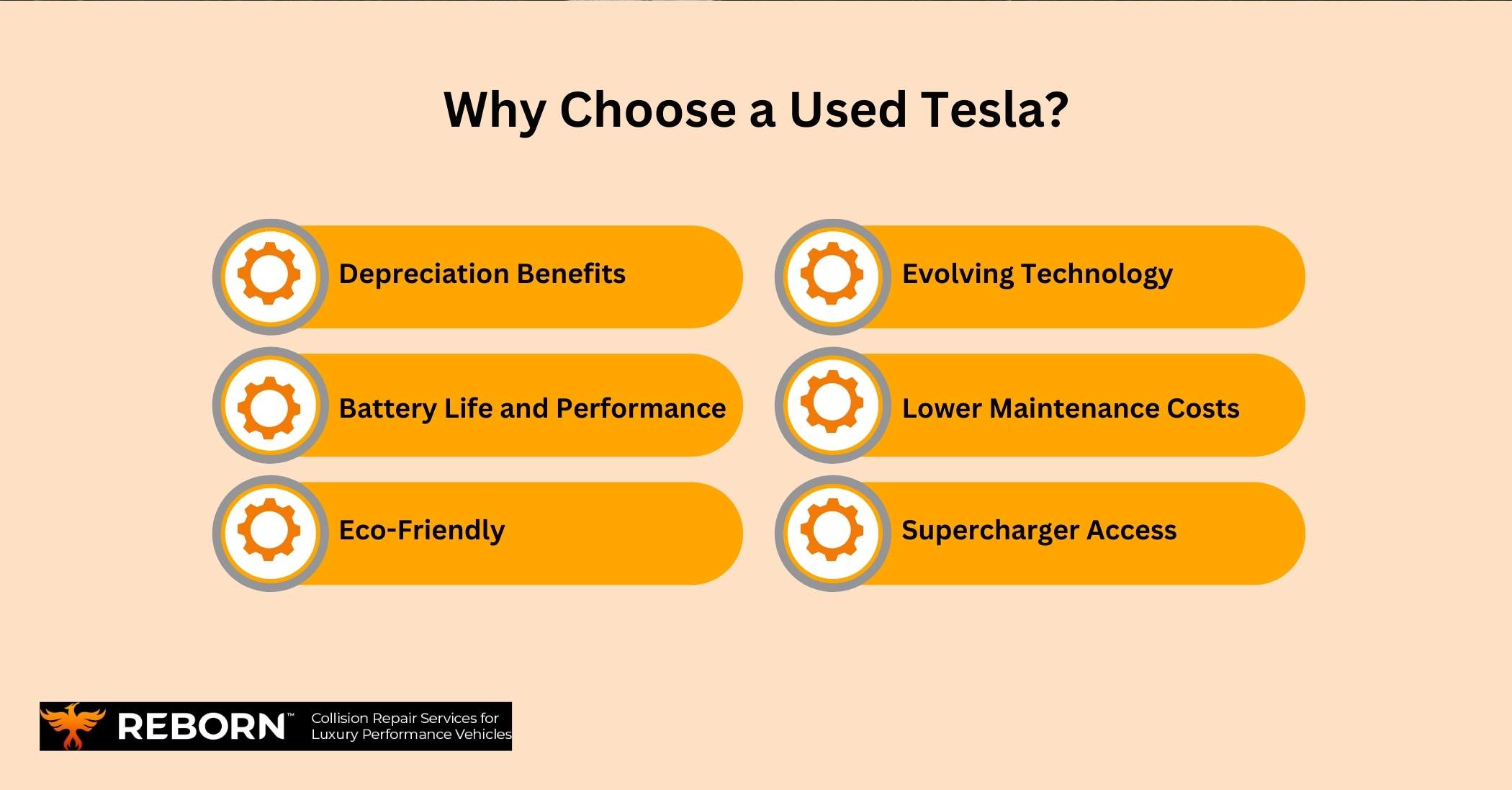
Depreciation Benefits
Teslas hold their value better than traditional gas-powered cars. Their advanced technology, high demand, and low maintenance needs contribute to slower depreciation, ensuring good resale value.
Evolving Technology
With over-the-air software updates, older Tesla models can receive new features and improvements. Additionally, Tesla’s consistent design ensures that even older models maintain a modern and appealing look.
Battery Life and Performance
Tesla batteries are built to last, retaining up to 90% of their charge capacity even after 320,000 kilometers. With proper care, used Teslas offer long-term reliability and performance.
Lower Maintenance Costs
Teslas have fewer moving parts than gas-powered cars, eliminating costs for oil changes, exhaust repairs, and other traditional maintenance. This makes them more affordable to maintain.
Eco-Friendly
Buying a used Tesla supports sustainability by reducing your carbon footprint. It’s a greener alternative to purchasing a new gas-powered car.
Supercharger Access
Many used Teslas come with access to Tesla’s Supercharger network, enabling convenient and fast long-distance travel.
Key Checklist for Inspecting Used Tesla Vehicles
Purchasing a used Tesla requires a thorough inspection to ensure reliable performance and long-term value. Use this detailed checklist to guide your evaluation:
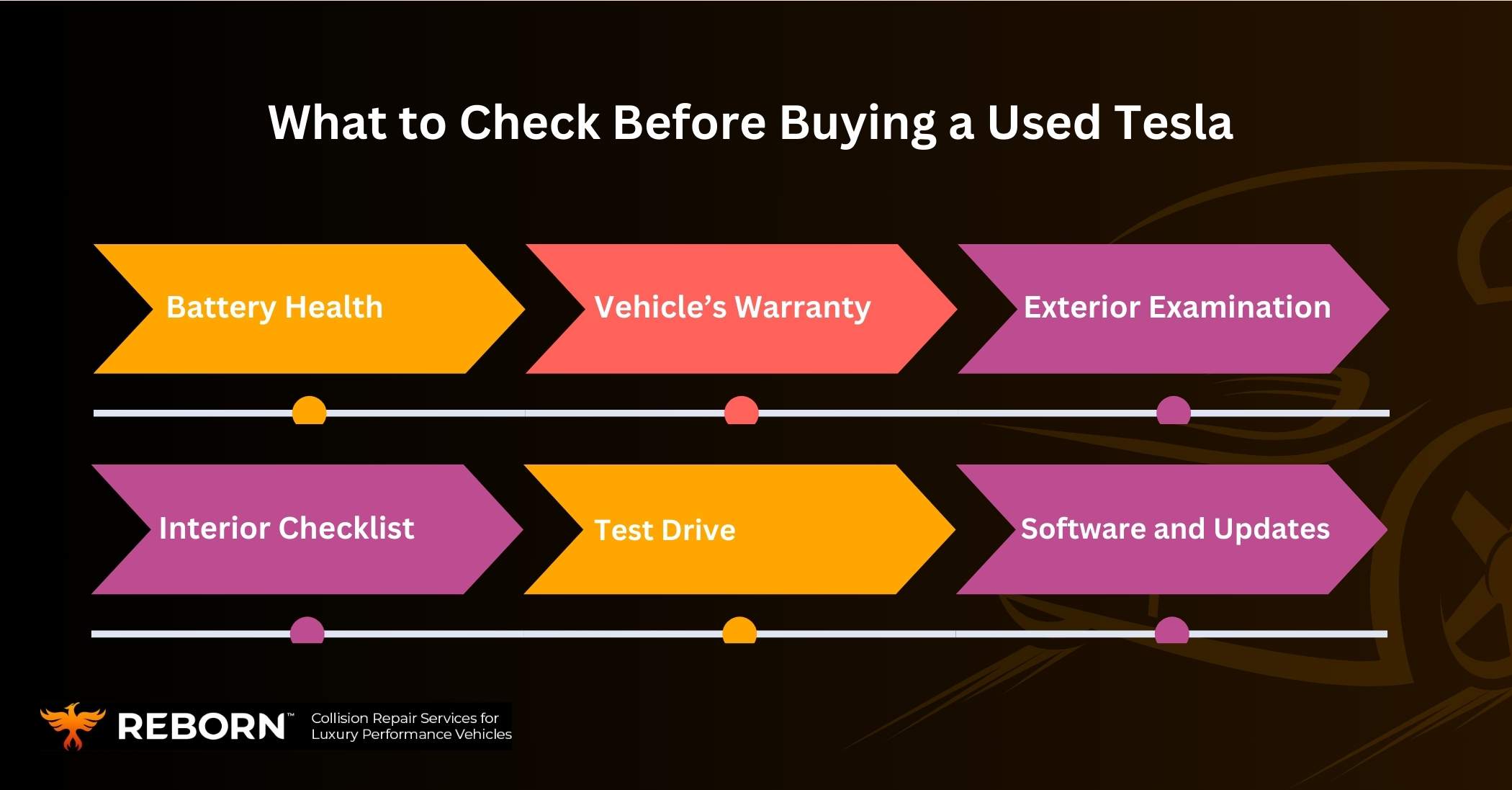
Battery Health
The battery is the most expensive component of a Tesla, making its condition a top priority. Assess battery health to avoid costly repairs.
- Check the displayed range at 100% charge and compare it to the original specifications.
- Use apps like Tessie or built-in diagnostics to evaluate battery health and degradation.
- Test charging speeds, including home charging and Supercharging.
- Inspect the charge port for damage and ensure the locking mechanism functions properly.
- Review the vehicle’s charging history if available, and ask the previous owner about Supercharging frequency.
Vehicle’s Warranty
Understanding warranty coverage can save you from unexpected repair costs.
- Confirm the remaining warranty coverage, including the four-year limited warranty and the eight-year battery and drive unit warranty.
- Request complete service records from previous owners.
- Check for any open recalls or service bulletins.
- Verify whether extended warranties or coverage transfer to new owners.
- Ensure the vehicle was serviced at authorized Tesla centers and ask about any aftermarket modifications.
Exterior Examination
A careful exterior inspection can reveal signs of damage, wear, or factory defects.
- Paint, Glass & Wheels: Look for deep scratches, cracks, or scuffs on surfaces and underside. Check tire tread depth and ensure valve stem covers are present.
- Panels: Ensure doors, hood, and trunk align properly and function smoothly. Glass roof panels should show no signs of leaks or misalignment.
- Electronics: Test key cards and fobs for functionality. Confirm all doors, including Falcon-Wing doors (Model X), open and close as intended.
- Lights & Wipers: Verify all lights work properly, and inspect windshield wipers for alignment issues.
Interior Checklist
The interior of a Tesla should be inspected for both comfort and functionality.
- Seats: Check for tears, scuffs, or misalignment, especially in Model Y rear seats.
- Electronics: Test the touchscreen for dead pixels or discoloration. Ensure all cameras, speakers, and USB outlets work.
- Climate Control: Confirm heating, AC, and heated seats/steering wheel are fully functional.
- Interior Buttons & Lights: Check all buttons, dome lights, footwell lights, and puddle lights for proper operation.
Test Drive
A test drive can uncover hidden issues and verify the car’s overall performance.
- Begin with a fully charged battery.
- Test acceleration, regenerative braking, and steering alignment.
- Listen for unusual noises from the suspension, drivetrain, or wind.
- Monitor energy usage and compare it to expected range figures.
- Assess ride comfort on various road surfaces and verify Autopilot features.
Software and Updates
Tesla’s performance depends heavily on its software. Ensure the car is up to date.
- Check the software version to confirm it’s current.
- Verify the availability of Premium Connectivity features, like satellite maps and live traffic updates. If not included, a subscription may be required.
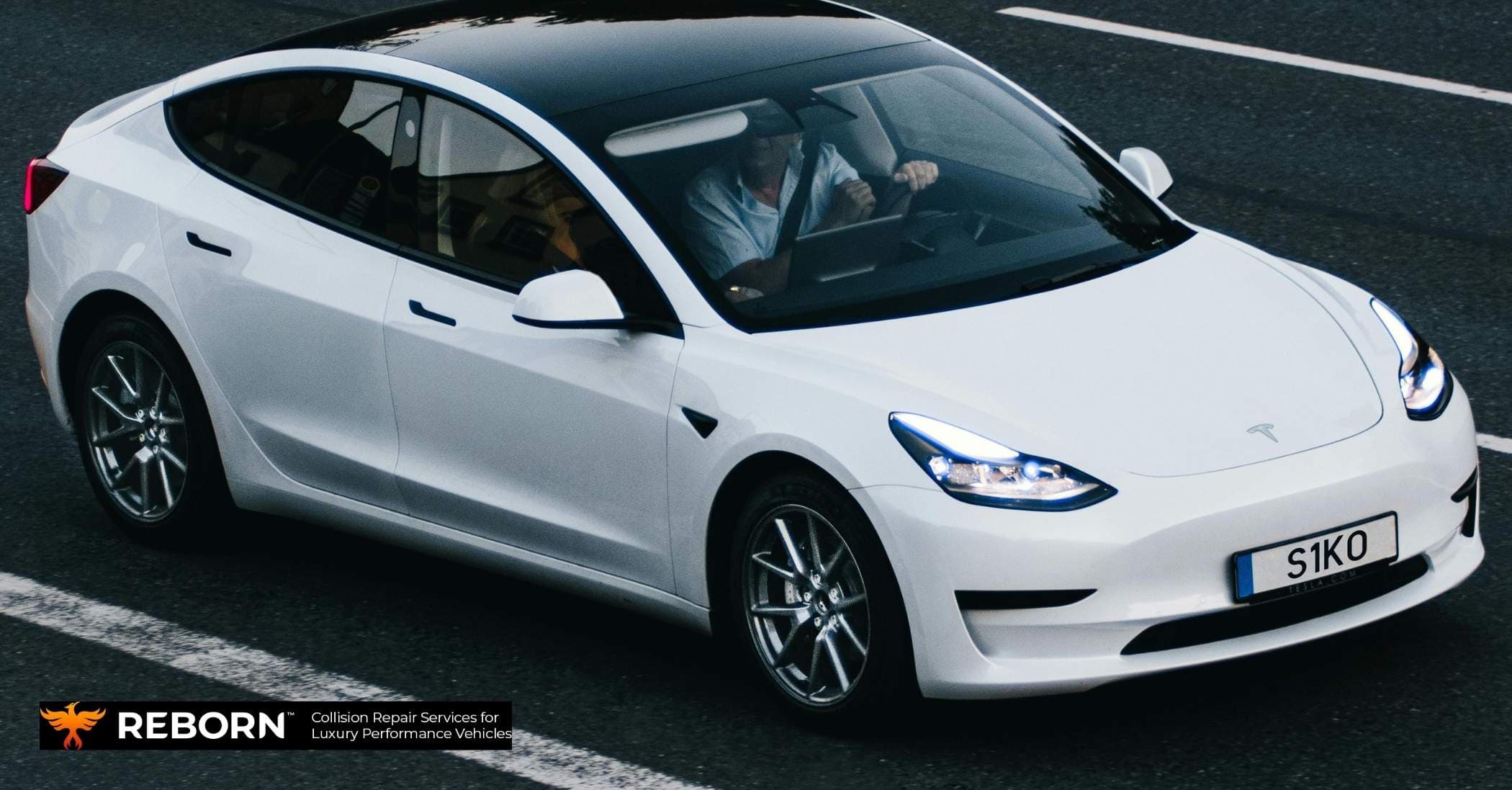
Common Red Flags and When to Consult a Tesla Repair Expert
When buying a used Tesla, identifying potential problems early is crucial. Here are key red flags to watch for and situations where consulting a Tesla expert, like Reborn Autobody, is essential:
Signs of Past Accidents or Damage
- Misaligned Panels: May indicate previous accidents or improper repairs.
- Different Paint Colours or Textures: Suggest the car has undergone post-crash repairs.
- Pulling to One Side: Could point to hidden frame damage, which is difficult to spot without professional tools.
Tip: If you notice any of these issues, consult a Tesla repair expert to ensure the car’s structural integrity.
Drivetrain Noises or Performance Problems
- Grinding or Whining Sounds: Unusual noises during acceleration may signal drivetrain issues.
- Slow Acceleration or Shaking: Could indicate motor or axle problems requiring professional diagnostics.
Tip: These repairs can be costly, so have an expert evaluate the vehicle before purchasing.
Charging Problems
- Extended Charging Times: May point to a failing battery or charging system issues.
- Unexpected Charging Interruptions: Could suggest faults in the battery management system.
Tip: Professional inspections can identify these problems early, helping you avoid expensive battery repairs or replacements.
Cost Estimates for Common Tesla Repairs
When buying a used Tesla, understanding repair costs is crucial to making an informed decision. Below are updated cost estimates for common Tesla repairs in Canadian dollars (CAD):
- Battery Replacement
- Model S/Model X: $16,000–$26,000 CAD
- Model 3/Model Y: $6,500–$13,000 CAD
Battery replacement is one of the most expensive Tesla repairs but is covered under an 8-year warranty. Always check the battery’s health and remaining warranty coverage before purchasing.
- Suspension & Drivetrain Repairs
- Suspension Repairs (Model S/X): $2,000–$4,000 CAD
- Drivetrain Issues: $2,500–$9,000 CAD
High-mileage Teslas may require suspension or drivetrain repairs, especially if there are performance issues or unusual noises. Inspect carefully during your evaluation.
- Falcon-Wing Door (Model X)
- Repair Costs: $2,000–$6,500 CAD
The unique falcon-wing doors on the Model X are prone to issues with motors, sensors, and hinges. Thoroughly test their functionality during the inspection to avoid costly repairs.
- Infotainment Screen Replacement
- Replacement Cost: $1,300–$3,500 CAD
Malfunctioning infotainment screens, such as touch issues or screen bubbling, can be expensive to replace. Ensure the screen is responsive and fully functional during your inspection.
Important Notes:
- Variation in Costs: Repair costs can vary depending on the service provider, location, and the Tesla model.
- Pre-Purchase Inspection: To avoid unexpected expenses, consider a professional inspection by certified Tesla repair experts like Reborn Autobody.
- Tesla’s Warranty Coverage: Check the warranty status to see if any repair costs may still be covered.
Conclusion
Buying a used Tesla is a smart investment, combining cutting-edge technology with environmental benefits. However, it’s essential to be aware of potential issues and associated repair costs for each model.
Using a comprehensive inspection checklist and identifying common warning signs will help you make a more informed decision. Factoring in potential repair expenses can also save you from unexpected costs down the road.
For added peace of mind, schedule a professional inspection with Reborn Autobody, a trusted Tesla repair expert. Their skilled team can uncover hidden problems, ensuring you avoid costly surprises.
With the right preparation and expert guidance, owning a Tesla can be stress-free and rewarding. Contact Reborn Autobody today to book your Tesla inspection and drive confidently into the future!



